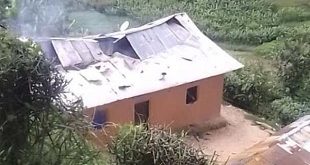
Kampala, Uganda | THE INDEPENDENT | Uganda is undertaking a highly controversial oil project amidst fears of likely adverse environmental effects. The debate is far from ending as the clock ticks to the first oil 2025. Will the government honor its pledge to sustainably exploit the resources?
The debate has rotated around fears of likely oil spills, the likely impact of oil and gas on wildlife, the disposal of toxic oil waste, and generally the impact on Lakes, rivers, and the landscape in an ecologically sensitive Albertine Graben.
After several delays, Uganda aims to begin pumping oil out of the ground before the end of 2025. Around 1.4 billion barrels of recoverable oil should be produced from the Tilenga project operated by France’s TotalEnergies, and Kingfisher under China’s Cnooc.
Will Uganda produce oil gas without harming the environment and its people?
Government technocrats, oil and gas companies developing the fields, and the sector regulator-Petroleum Authority (PAU) have answered in the affirmative as they promise Ugandans lasting value from these resources.
When put to environmental activists, the same question will receive differing answers including not all, possibly yes and yes if they stick to the environmental enacted from the time of discovery in 2006. Can we trust that those good laws and policies will be implemented?
Engineer Irene Batebe told Uganda Radio Network that the government promises to live up to the environmental promise having benchmarked the best environmental practices from Norway.
“We have been able to put in place the legal and regulatory framework to ensure a sustainable industry. They supported us in putting in place the NEM Act and reviewing it, to ensure that the aspects of the environment are catered for,” said Batebe.
Additionally, Batebe said the government worked with the Norwegians in developing the oil Spill contingency plan that detailed responses in case an oil spill occurred. “This plan largely ensures that we are prepared in case there is an emergency, in case there is an oil spill God forbid. If that happened, we will be well-equipped,” Batebe explains.
Norway is considered a model for having prudently managed its oil revenues well and ensured minimal harm to the environment. Under the Oil for Development (OfD), Norway supported Uganda in various aspects of oil and gas management, policy formulation, and skills development. The regulation of the environmental aspect of oil has been important given the unique location of the petroleum resources in Uganda. “I always say if similar resources had been discovered in Norway as you have in Uganda, they would never have been developed. Never. But those are the resources you have,” said Gunner Sjögren from the Norwegian Offshore Directorate.
OfD support to Uganda’s petroleum sector ended at the end of May this year. However, Sjögren said all the building blocks were in place for Uganda to proceed.
Gunner Sjögren said Uganda took a challenging decision. “The environmental aspects of this, and the uniqueness of your resources, also the type of oil is very unique. So your job is harder than ours was” remarked Sjögren who has been at the center of oil policy development in Uganda since 2007. The difference between Norway and Uganda is that Norway began its production in 1971 before key environmental laws and regulations we put in place.
The oil and gas-related environmental laws now include the National Environment Act 2019, the National Oil Spill Contingency Plan, the National Environment (Environmental and Social Assessment) Regulations, 2020 and the National Environment (Standards For Discharge of Effluent Water into Water or Land) Regulations 2020.
The Energy and Mineral Development Minister, Ruth Nankabirwa promised that the government would not divert from all the environmental promises.” We will just add on. Because the foundation is very firm, the house will be strong,” said Nanbirwa.
Dr. Joseph Kobusheshe the Director, Environment, Health, and Safety at the Petroleum Authority of Uganda told URN that it would be hard for the operators not to abide by the environmental laws and regulations. These laws are hinged on a “polluter pays Principal” that provides the costs of polluting activities should be borne by the party who causedit.
He told URN that Uganda is the first country in Africa to conduct a strategic assessment that guides the development of the petroleum sector.
Kobusheshe said the Authority is committed to sustainably developing the sector. “When I say sustainably, I mean focusing on what has become the core Environmental Social Governance (ESG) principals,” Kobusheshe explained.
The environmental component of ESG component in oil encompasses a comprehensiveapproach to managing environmental risks, reducing carbon footprints, and transitioning toward more sustainable energy sources.
All the major oil development projects in the Albertine have undergone Environmental Impact Assessments (EIAs) and Social Impact Assessments (ESEAs)
The EIA procedure ensures that the environmental implications of decisions are taken into account before any decisions are made about projects likely to have significant impacts on the environment. This has generated debate as Uganda heads production.
At one moment, the Wildlife Conservation Society in Uganda (WCS) said it had conducted periodic reviews of EIAs in the oil and gas sector in Uganda and observed that the quality of EIAs for oil development was poor.
There have been changes around EIAS and ESEAs following the development of The National Environmental Audit Regulations, 2020, The National (Environmental Assessment) Regulations 2020.
Isaac Ntuju, the head of oil and gas at National Environmental Management Authority -NEMA indeed agrees that there were some gaps in the EIAs for the Tilenga project. He however said there have been many changes thereafter.
.“When you look at the Environmental Impact Assessment certificates before 2019, the Tilenga project. It was a transformation. We overhauled the certificate. We made sure that we covered all ground,” explains Ntuju.
He said Uganda had had oil spills downstream (at fuel stations, factories, and from accidents during the transportation of petroleum products) but Uganda had not thought about the oil spill contingency plan until one was developed for the oil developments.
“It is a hard sale to tell the politicians that we need to buy all this massive equipment to prepare for an oil spill incident in case it happens. But again we pray that we will never have to use that equipment and skills” says Ntuju.
Dr. Simon Takozekibi Nampindo, the Director at the Wildlife Conservation Society in Uganda (WCS) told Uganda Radio Network that while Uganda seems to be on the right foot in terms of environment, what is so key is that oil is being explored from the key biodiversity areas.
“And you can imagine that heritage being disrupted because of oil exploitation,” he said.
The good news according to Nampindo is that the NEMA Act has a provision that requires developers to legally offset their impacts particularly if they are operating in key biodiversity areas.
“We have translated this law into three key native languages. Therefore, nobody will have an excuse that it is not in my first language. We have also helped the government to develop the national biodiversity and social offset strategy. That is very important. Now we have something to play by”
Besides the laws and policies, Nampindo told Uganda Radio Networks that the oil operators are obliged to offset their impacts as per the International Finance Corporation (IFC) performance standards particularly standard six.
“Everybody wants to be a winner. That is the most challenging thing. We have a government that wants to exploit oil so that it can better its people. We have the wildlife which has to continue to exist and we have the people and their livelihoods,” Nampindo suggests.
Dr. Nampindo observes that the government has done well by setting up the right legal regime though there are still some gaps in policies. “There is a very strong foundational policy regime. And also setting up the institutions to manage oil and gas,” he said “We are also seeing kind of positive change in the oil companies themselves to become more responsible and accountable. And investing a lot to understand the ecosystem where they work”
On the downside, Nampindo observes that there are a lot of expectations from the people that have to be managed. That, he notes will require increased accountability and transparency. “It will require us not to be corruptible, prevail over corruption so that people really see the value from the oil,” he suggests.
*****
URN
 The Independent Uganda: You get the Truth we Pay the Price
The Independent Uganda: You get the Truth we Pay the Price



